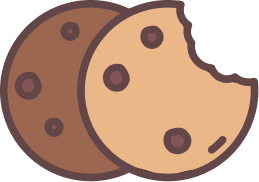#TakeCharge with #Aimshala
How make a career in Textile CAD Designer
A career as a Textile CAD Designer offers a unique opportunity to blend creativity with technology in the textile industry. To embark on this career path, individuals typically need a strong academic background in fashion design, textile engineering, or a related field. Pursuing a bachelor's degree is essential, followed by potential specialization through master's programs or relevant certifications in CAD software. Gaining practical experience through internships, design projects, or working in textile companies enhances employability. Networking with professionals in the field and staying updated with the latest design technologies and trends are also crucial. With a blend of education, experience, and a passion for textiles, one can build a rewarding career dedicated to advancing textile design.
Career in Textile CAD Designer
What are the roles and responsibilities in Textile CAD Designer?
- Creating Designs : Textile CAD Designers create detailed textile patterns and designs using CAD software, ensuring they meet client specifications and industry standards.
- Collaborating with Teams : They work closely with fashion designers, production teams, and marketing departments to ensure designs are feasible and align with brand aesthetics.
- Updating Designs : Textile CAD Designers modify existing designs based on feedback or new trends, ensuring the final product remains relevant and appealing.
- Quality Control : They assist in quality control processes, ensuring that the final textile products meet the required standards in terms of design and functionality.
- Researching Trends : Textile CAD Designers stay updated with current fashion and textile trends to inform their designs and ensure market competitiveness.
What education is required to study Textile CAD Designer
Check out the dates of the total number of candidates who have appeared in the CUET 2022 exam from the below table.
Stream |
Graduation |
After Graduation |
After Post Graduation |
|
|
Path 1 |
Completion of high school with a focus on art and design subjects. |
Bachelor of Science in Fashion Design or Textile Engineering. |
Master's degree in Textile Design or Fashion Technology. |
Certifications in CAD software such as Adobe Illustrator, CorelDRAW, or specialized textile design programs. |
|
Path 2 |
Completion of high school with emphasis on vocational training in textiles. |
Bachelor's degree in Textile Technology or Fashion Merchandising. |
Master's degree in Fashion Management or related fields. |
Internships or training programs in textile CAD design. |

Feeling unsure about
your future?
Let's find the perfect career path for you!
with AI-powered career
guidance

What are the key skills required for Textile CAD Designer
- Proficiency in CAD Software - Essential for creating detailed designs and patterns efficiently and accurately.
- Creativity - Vital for generating innovative designs that stand out in the competitive textile market.
- Attention to Detail - Crucial for ensuring accuracy in designs and meeting client specifications.
- Communication Skills - Important for collaborating with other designers and presenting ideas effectively.
- Time Management Skills - Necessary for managing multiple projects and meeting tight deadlines.
What are the career opportunities in Textile CAD Designer?
- Textile Engineer - Textile Engineers focus on the development and production of fabrics, ensuring quality and performance.
- Fashion Designer - Fashion Designers create clothing and accessories, often utilizing CAD skills to visualize their concepts.
- Textile Merchandiser - Textile Merchandisers manage the marketing and sales of textile products, requiring an understanding of design and market trends.
- Pattern Maker - Pattern Makers develop templates for textile production, closely collaborating with designers to ensure accurate production.
- Production Manager - Production Managers oversee the manufacturing process of textiles, ensuring efficiency and adherence to quality standards.
What is the salary and demand for Textile CAD Designer?
- Salary Overview - The typical salary for Textile CAD Designers ranges from $45,000 for entry-level positions to over $85,000 for experienced professionals, with variations based on education and location.
- Regional Salary Variations - Salaries can vary significantly by region; for example, Textile CAD Designers in urban fashion hubs may earn more than those in rural areas.
- Current Job Market Demand - The demand for Textile CAD Designers is growing due to the increasing need for innovative designs and sustainable textile solutions.
- Future Demand Projections - Future demand for Textile CAD Designers is expected to rise as fashion technology advances and the industry adapts to new trends.
Leading companies for careers in Textile CAD Designer

Nike

Adidas

H&M

Zara

Levi's

VF Corporation

Lululemon

Under Armour
What are the best colleges for Textile CAD Designer in India?
Undergraduate
College |
Location |
Website |
|
National Institute of Fashion Technology |
New Delhi |
https://www.nift.ac.in |
|
Pearl Academy |
New Delhi |
https://www.pearlacademy.com |
|
Institute of Textile Technology |
Ahmedabad |
https://www.itt.ac.in |
|
Srishti Institute of Art, Design and Technology |
Bengaluru |
https://www.srishti.ac.in |
|
MIT Institute of Design |
Pune |
https://www.mitid.edu.in |
Postgraduate
College |
Location |
Website |
|
National Institute of Fashion Technology |
New Delhi |
https://www.nift.ac.in |
|
Pearl Academy |
New Delhi |
https://www.pearlacademy.com |
|
National Institute of Design |
Ahmedabad |
https://www.nid.edu |
|
Indian Institute of Technology, Delhi |
New Delhi |
https://www.iitd.ac.in |
|
Srishti Institute of Art, Design and Technology |
Bengaluru |
https://www.srishti.ac.in |
What are the best colleges for Textile CAD Designer in Abroad?
College |
Location |
Website |
|
Fashion Institute of Technology |
New York, USA |
https://www.fitnyc.edu |
|
London College of Fashion |
London, United Kingdom |
https://www.arts.ac.uk/colleges/london-college-of-fashion |
|
Rhode Island School of Design |
Providence, Rhode Island, USA |
https://www.risd.edu |
|
Politecnico di Milano |
Milan, Italy |
https://www.polimi.it |
|
Central Saint Martins |
London, United Kingdom |
https://www.arts.ac.uk/colleges/central-saint-martins |
What are the top entrance exams in India for pursuing a career in Textile CAD Designer
College |
Tentative Date |
UG/PG |
Important Elements |
Website |
|
National Institute of Fashion Technology |
January |
Undergraduate |
General Knowledge, English, and Creative Ability. |
https://www.nift.ac.in |
|
Pearl Academy |
April |
Undergraduate |
Design Aptitude, General Knowledge, and English. |
https://www.pearlacademy.com |
|
National Institute of Design |
March |
Postgraduate |
Design Aptitude Test and Interview. |
https://www.nid.edu |
|
Indian Institute of Technology, Delhi |
May |
Postgraduate |
GATE Exam in relevant disciplines. |
https://www.iitd.ac.in |
|
Srishti Institute of Art, Design and Technology |
February |
Postgraduate |
Portfolio Submission and Design Aptitude Test. |
https://www.srishti.ac.in |
Pros & Cons of a Career in Textile CAD Designer
Pros
- Textile CAD Designers play a crucial role in the fashion industry, contributing to innovative and sustainable designs.
- The field offers competitive salaries, especially for those with advanced skills and experience.
- Professionals in this field have opportunities for continuous learning and growth, adapting to new technologies and trends.
- Working in a creative environment allows for artistic expression and collaboration with diverse teams.
Cons
- The job can be demanding with tight deadlines, especially during fashion seasons or product launches.
- Some roles may require extensive hours of screen time, which can lead to fatigue.
- The fashion industry can be highly competitive, making job security a concern for some professionals.
- The need for constant innovation can create pressure to always produce unique designs.
Did you find this information helpful?


Report
0 out of 0 found this helpful


